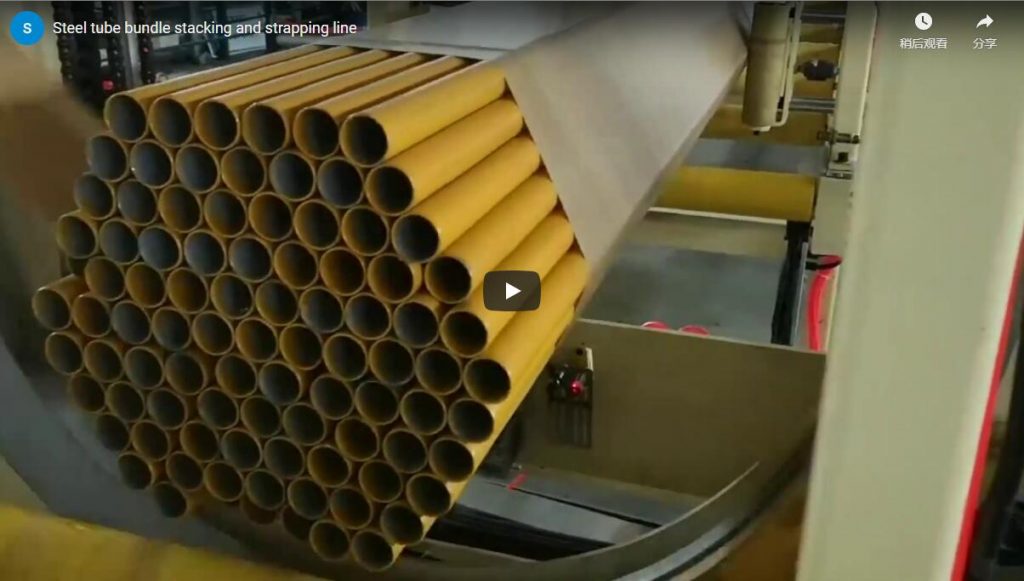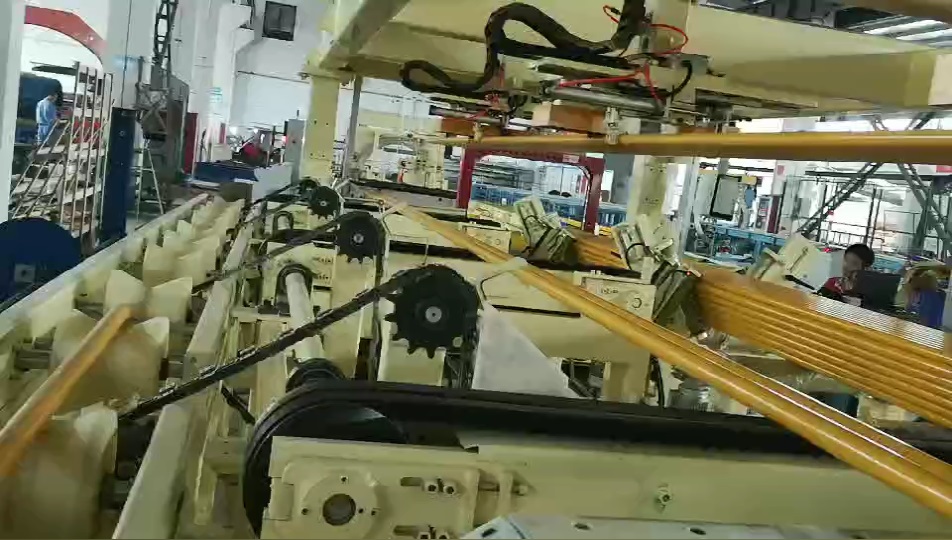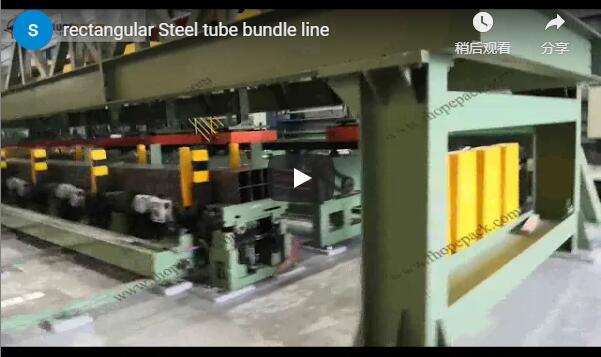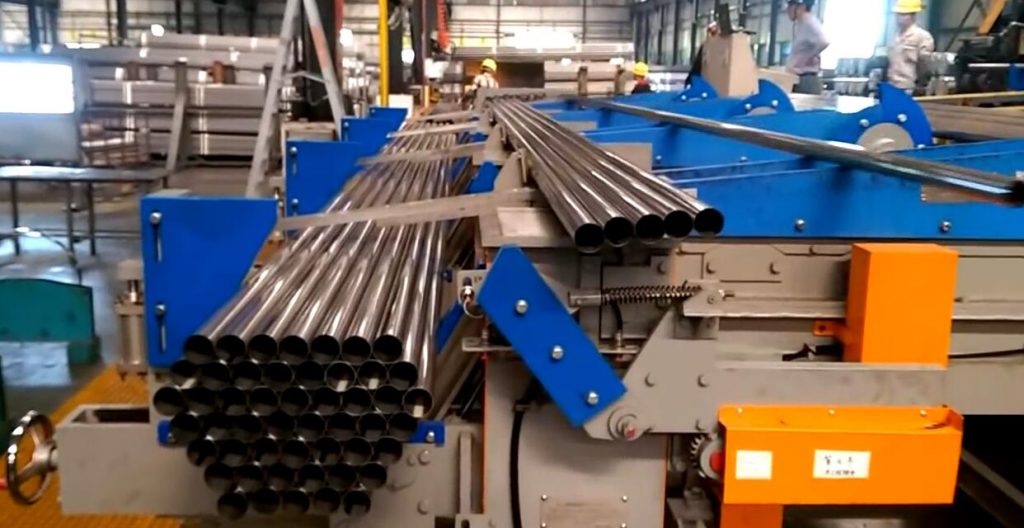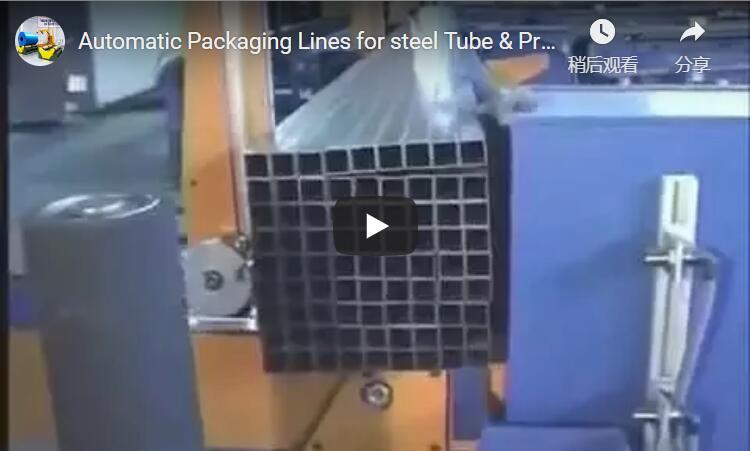Enhancing Efficiency and Safety: A Deep Dive into the Super Large Steel Tube Bundle Forming and Packing Line
In the demanding environment of steel processing and distribution, handling large-diameter or long steel tubes presents significant logistical and safety challenges. Manual or semi-automated bundling processes are often labor-intensive, slow, and pose risks to workers. The Super Large Steel Tube Bundle Forming and Packing Line, showcased in the video above, represents a significant leap forward, offering a fully automated solution designed for high throughput, consistency, and enhanced operational safety. This article delves into the technical specifications, design considerations, key components, and operational benefits of such advanced steel tube bundling systems.
1. Addressing the Core Challenge: Manual vs. Automated Bundling
Traditionally, bundling large steel tubes involved manual alignment, strapping, and handling. This process suffers from several drawbacks:
- Inconsistency: Bundle shapes and tightness can vary, affecting stability during transport and storage.
- Low Efficiency: Manual labor significantly limits the speed of the packing process, creating bottlenecks.
- Safety Risks: Handling heavy tubes exposes workers to potential crush injuries, strains, and other hazards.
- High Labor Costs: Significant manpower is required to maintain even moderate throughput.
Automated lines, like the one featured, directly address these issues by employing sophisticated mechanical and control systems.
2. Operational Workflow: From Loose Tubes to Secured Bundles
The automated process typically follows these key stages:
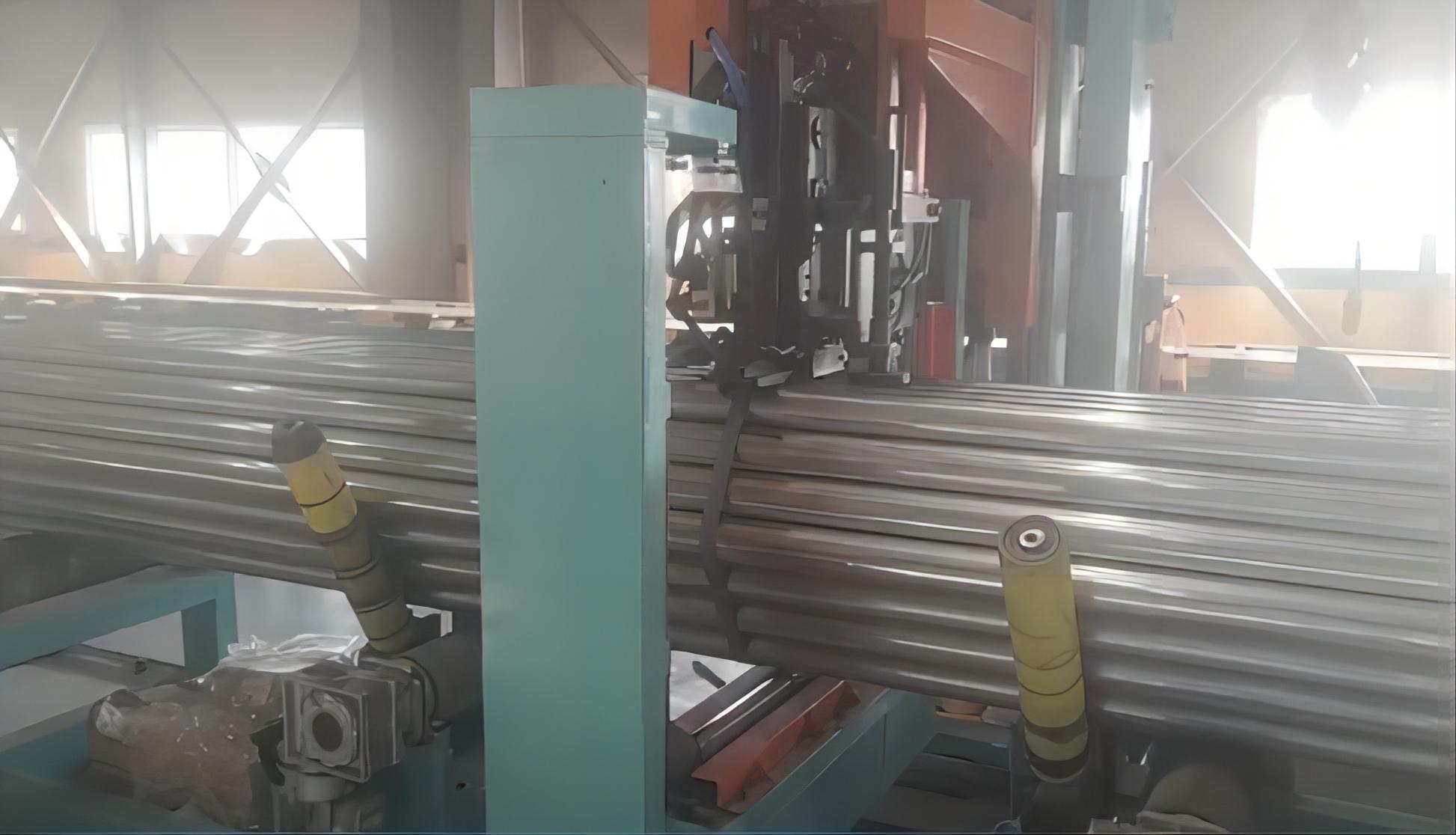
- Infeed: Loose steel tubes are received onto the line, often via roller conveyors or chain transfer systems.
- Counting & Alignment: Sensors accurately count the required number of tubes for a bundle. Mechanical guides and alignment tools arrange them precisely, often into a hexagonal shape for optimal density and stability.
- Bundle Formation: Tubes are tightly gathered and clamped into the desired bundle configuration.
- Strapping: Automated strapping heads apply steel or high-strength PET strapping at pre-determined positions along the bundle length. Tension is precisely controlled to ensure bundle integrity without damaging the tubes.
- Outfeed & Discharge: The completed, securely strapped bundle is transferred off the main line, typically onto storage racks or a dispatch conveyor system.
The entire operation is seamlessly managed by a Programmable Logic Controller (PLC), minimizing the need for manual intervention.
3. Technical Specifications Overview
While exact specifications vary based on manufacturer and customer requirements, typical parameters for a super large steel tube bundling line might include:
| Parameter | Example Specification | Notes |
|---|---|---|
| Tube Diameter Range | 100 mm - 500 mm (4" - 20") | Accommodates a wide variety of large tubes |
| Tube Length Range | 6 m - 18 m (20 ft - 60 ft) | Handles standard and extended lengths |
| Max Bundle Weight | 5,000 kg - 15,000 kg (11k - 33k lbs) | Depends on structural design |
| Target Bundle Shape | Hexagonal (typically) | Square/Rectangular options may exist |
| Cycle Time | 2 - 5 minutes per bundle | Dependent on bundle size and complexity |
| Strapping Material | Steel or PET | Based on application needs |
| Strapping Heads | 2 - 4 heads | Positioned for optimal bundle security |
| Control System | PLC (e.g., Siemens, Allen-Bradley) | With HMI (Human-Machine Interface) |
| Power Requirements | 480V/3Ph/60Hz (or regional std.) | Varies with scale and components |
| Operating Footprint | Custom based on layout | Can be substantial for large lines |
Note: The specifications listed are illustrative examples and actual machine capabilities will vary.
4. Key Components and Design Philosophy
The reliability and efficiency of the line hinge on the robust design and integration of its core components:
- Heavy-Duty Frame & Structure: Built to withstand the significant weight and stresses involved in handling large steel tubes. Robust steel construction is paramount.
- Tube Feeding & Conveying System: Often utilizes heavy-duty rollers, chain conveyors, or walking beam mechanisms designed for durability and precise tube positioning.
- Bundle Forming Mechanism: Employs powerful clamps, shaping guides, and lifting/lowering mechanisms to accurately form the hexagonal (or other specified) bundle shape. Hydraulic or electromechanical actuation is common.
- Automated Strapping Heads: Industrial-grade strapping units designed for high tension and reliability. Features often include automatic strap feeding, tensioning, sealing (e.g., friction weld for PET, notch/seal-less for steel), and cutting.
- PLC Control System & HMI: The central nervous system. The PLC executes the programmed sequence, monitors sensors, and controls actuators. The HMI provides operators with system status, diagnostics, and parameter adjustment capabilities (e.g., tube count per bundle, strap positions).
- Sensors and Safety Systems: Photoelectric sensors, proximity switches, and limit switches monitor tube presence, position, and machine status. Safety features include emergency stops, light curtains, physical guarding, and interlocks to protect personnel.
The design philosophy emphasizes automation, durability, minimal maintenance, and operator safety, crucial in demanding industrial settings.
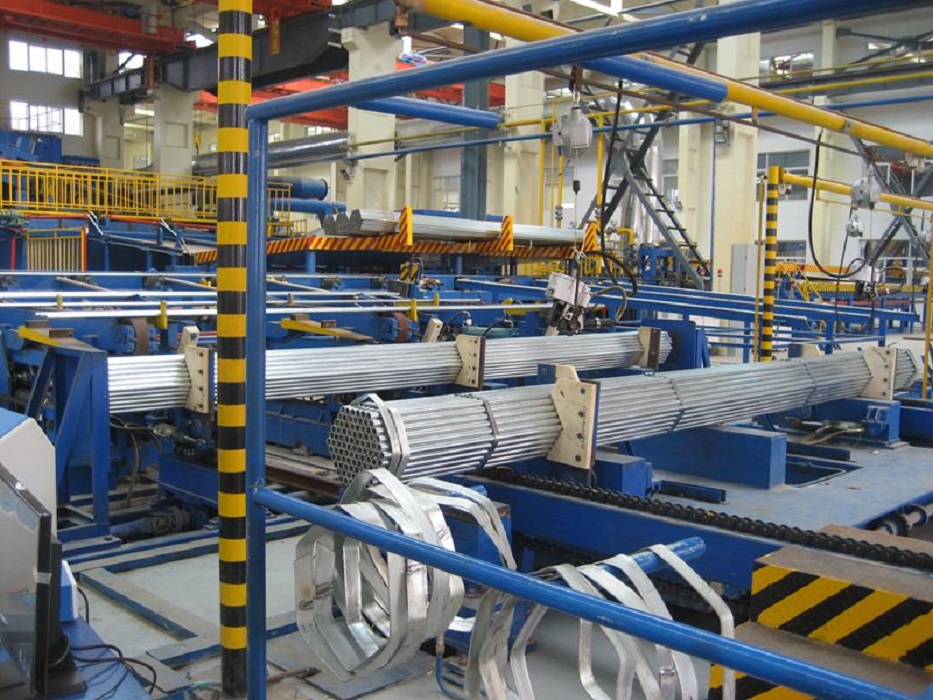
5. Operational Efficiency, ROI, and User Perspective
Implementing an automated steel tube packing line yields tangible benefits:
- Increased Throughput: Dramatically speeds up the bundling process compared to manual methods, eliminating bottlenecks.
- Reduced Labor Costs: Significantly minimizes the manpower required for bundling, allowing personnel reallocation to higher-value tasks.
- Improved Consistency & Quality: Ensures every bundle is formed and strapped to the same specifications, improving load stability and reducing potential transit damage.
- Enhanced Safety: Removes workers from direct contact with heavy tubes during the bundling and strapping process, drastically reducing injury risks.
- Optimized Material Usage: Precise strap placement and tension control can optimize strapping material consumption.
From a user perspective, integrating such a line requires careful planning regarding floor space, power supply, and upstream/downstream material flow. Operator training on the HMI and basic troubleshooting is essential. Maintenance access and scheduled preventative maintenance are key to ensuring long-term reliability and maximizing the return on investment (ROI), which is often realized through labor savings, increased output, and improved safety records.
6. Industry Applications
This type of automated bundling machinery is indispensable in various sectors, including:
- Steel Pipe and Tube Mills
- Large Steel Service Centers and Distributors
- Oil Country Tubular Goods (OCTG) Processors
- Infrastructure and Construction Material Suppliers
Any operation handling significant volumes of large-diameter steel tubes or pipes can benefit from the efficiency and safety gains offered by this technology.
Conclusion: Automating for a Competitive Edge
The Super Large Steel Tube Bundle Forming and Packing Line is more than just machinery; it's a strategic investment in operational efficiency, workplace safety, and product quality consistency. By automating a traditionally challenging and hazardous process, companies can achieve significant cost savings, boost productivity, and gain a competitive advantage in the fast-paced industrial distribution landscape. As industries continue to prioritize automation, systems like these will become increasingly vital for handling heavy industrial materials effectively and safely.

